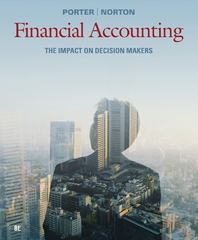Data in Million USD Cash Flow 12 months Jun-02-2018 USD 12 months Jun-01-2019 USD 12 months May-30-2020 USD For the Fiscal Period Ending Currency Net Income Depreciation & Amort. Amort. of Goodwill and Intangibles Various non-cash adjustments Other Operating Activities Change in Acc. Receivable Change In Inventories Change in Acc. Payable Cash from Ops. 125.9 51.2 2.8 2.1 (33.5) 31.4 (8.0) 284 200.4 54.2 51.9 2.8 (0.2) 7.0 16.0 (2.3) (143) 115.1 18.4 55.2 2.9 6.6 10.9 (28.3) (9.7) 17.7 73.6 (19.7) 1.0 Capital Expenditure Sale of Property, Plant, and Equipment Cash Acquisitions Invest in Marketable & Equity Securities Cash from Investing (68.0) 1.6 (17.9) 36.5 (47.8) (124.2) 3.3 (44.7) 104.2 (61.4) (145.1) (163.9) Short Term Debt Issued Long-Term Debt Issued Total Debt issued Short Term Debt Repaid Long-Term Debt Repaid Total Debt Repaid (4.8) (4.8) (3.8) (3.8) (1.7) (1.7) (0.9) (1.1) Repurchase of Common Stock Common Dividends Paid Other Financing Activities Cash from Financing (1.0) (417) 0.3 (5.7) (46.5) (0.8) (3.4) Net Change in Cash Cash at the beginning Cash at the end 20.8 30.9 17,6 48.4 8.9 69.2 7841 69,2 You are provided the Statements of Cash Flow (2017-2020) of Cal-Maine Foods Inc., the largest producer and marketer of eggs in the U.S. Using data from the three years, respond the following questions, following the approach discussed in class (e.g., Harvard case's approach). 1 1. Was the firm able to generate enough cash from operations to pay for all of its capital expenditures (CAPEX)? 2. Was CAPEX higher than Depreciation and Amortization Expenses? 3. Did the cash flow from operations cover both capex and the firm's dividend payments, if any? 4. If it did, how did the firm invest its excess cash? 5. If not, what were the sources of cash the firm used to pay for the capital expenditures or dividends? 6. Were the working capital (current asset and current liability) accounts other than cash and short term debt primary source of cash, or users of cash? 7. What other major items affected cash flows? In addition, briefly discuss what was the trend in: 1. Net Income? 2. CFO? 3. CAPEX? 4. Dividends? 5. Net borrowings (proceeds less payments of short term and long term debt)? 6. Working capital accounts? Based on the evidence in the SCF alone, what is your assessment of the financial strength of the business? Why? You are provided the Statements of Cash Flow (2017-2020) of Cal-Maine Foods Inc., the largest producer and marketer of eggs in the U.S. Using data from the three years, respond the following questions, following the approach discussed in class (e.g., Harvard case's approach). I 1. Was the firm able to generate enough cash from operations to pay for all of its capital expenditures (CAPEX)? 2. Was CAPEX higher than Depreciation and Amortization Expenses? 3. Did the cash flow from operations cover both capex and the firm's dividend payments, if any? 4. If it did, how did the firm invest its excess cash? 5. If not, what were the sources of cash the firm used to pay for the capital expenditures or dividends? 6. Were the working capital (current asset and current liability) accounts other than cash and short term debt primary source of cash, or users of cash? 7. What other major items affected cash flows? In addition, briefly discuss what was the trend in: 1. Net Income? 2. CFO? 3. CAPEX? 4. Dividends? 5. Net borrowings (proceeds less payments of short term and long term debt)? 6. Working capital accounts? Based on the evidence in the SCF alone, what is your assessment of the financial strength of the business? Why









